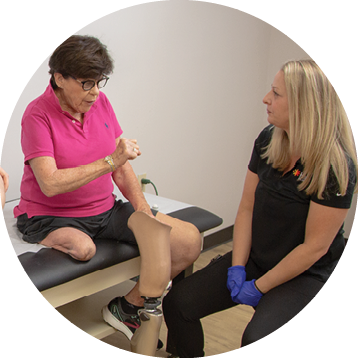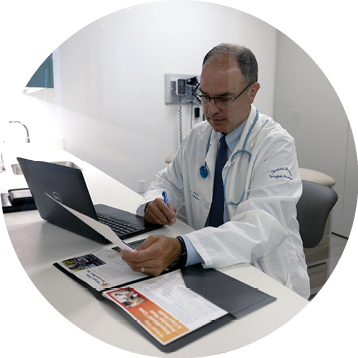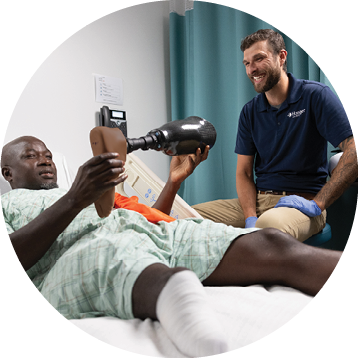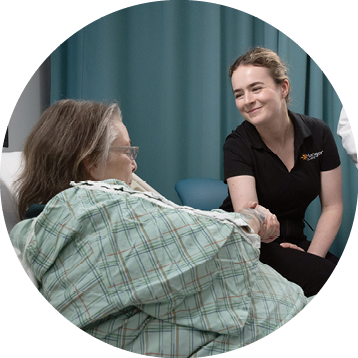
A six-stage framework designed to optimize outcomes for patients with lower limb amputation.

By focusing on mobility and well-being throughout the entire rehabilitation pathway, EmpoweredCare delivers an evidence-based, best-practice approach to interdisciplinary care, support, education, and resources from pre-amputation through life-long care.
Resources for You
Get further acquainted with the EmpoweredCare program and learn how Hanger Clinic can help support your practice.
Resources for Your Patients
Provide your patients with the information they need to feel educated and informed about the limb loss journey.
An Evidence-Based Approach to Amputation Rehabilitation
With the focus in healthcare changing from episodic, reactive care to long-term health, there is also a shift in how we care for patients after amputation. The Hanger Institute for Clinical Research & Education® has built a body of evidence supporting this approach and is subsequently transforming the clinical care we provide to patients following amputation.

Focused on Delivering Health Systems:
![]()
Value-Based Care
We provide your hospital with an accountable, compliant, cost-effective partnership by working collaboratively to optimize care and resources.
![]()
National Resources & Expertise
With over 900 clinics across the country, we serve more hospitals with more resources than any other O&P provider and can care for patients close to home and while traveling.
![]()
Whole-Person, Life-Long Care
In addition to ongoing care, we provide patients with peer support, resources, and education from pre-amputation to rehabilitation and beyond.
![]()
Patient Retention
Our program is designed to retain patients within your health system so they can achieve proper rehab therapy, counseling, and the best possible outcomes.
EmpoweredCare Components
Amputee Care Framework
| The program provides a customizable, evidence-based amputee care framework designed to take the patient from when they’re identified as a surgical candidate through prosthetic follow-up. |  |
|---|
Hospital Resources
| Resources and education for hospital staff will include training and activities to prepare them for implementing a tailored/custom program to fit their unique needs. |  |
|---|
Patient & Caregiver Education
| Prior to and/or after surgery, patients and their caregivers will receive education on what to expect after the procedure, including recovery, rehabilitation, community support, and prosthetic options. |  |
|---|
Hanger Clinic Team Support
| Standardized and specialized training and continuing education based on best practices will be provided to all members of the Hanger Clinic team to ensure we are setting patients up for the best outcomes possible. |  |
|---|
Community Support
| Community support resources will be provided to address the emotional and psychological needs of patients and their families. |  |
|---|
EmpoweredCare Framework
1
Hospital Preparation
Provide hospital staff with training, education, and resources to support local process and prepare for first patients.
2
Care Delivery
Delivery of removable rigid dressing or shrinker, and in-hospital patient follow-up.
3
New Patient Orientation
Patient consult, education, expectation setting, and peer support. Depending on patient circumstances, this can happen pre-amputation or post-operatively.
4
Post-Discharge Tracking
Consistently follow-up with patients at discharge location until ready for initial prosthetic evaluation.
5
Evaluation To Delivery
Initial prosthetic evaluation through delivery.
6
Follow-Up to Long Term Care
Prosthetic follow-up, outcomes collection, and ongoing care.
Start a Conversation Today
If you’re interested in partnering with Hanger Clinic on the EmpoweredCare program, let’s start a conversation today.
